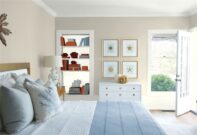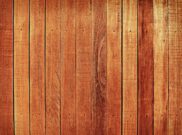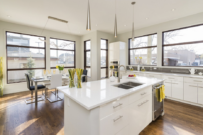Bass Traps vs Acoustic Panels: What are the Differences?


Stephanie Rogers
Stephanie Rogers is a distinguished BPA Advisor specializing in Audio & Technology. As a versatile writer, Stephanie channels her passion for writing into various topics, including home remodeling, interior design ideas, and landscaping. Recently, her interest in music has led her to explore the dynamic intersection of audio and technology in construction. She contributes valuable insights that enrich discussions on the integration of cutting-edge audio solutions in modern construction practices.
With the advent of remote work, Zoom meetings, podcasts, and other forms of digital media creation, the need for soundproof spaces has skyrocketed in recent years. With few people able to completely remodel their homes or commercial facilities to improve acoustics, many after-market products are being added to spaces to help improve sound quality. Two examples of sound mitigation products are bass traps and acoustic panels. While both are relatively easy to add to a space, they each serve unique functions when it comes to sound quality control. For more on the benefits and application of these two products, keep reading for a detailed breakdown on bass traps vs acoustic panels.
How Do Acoustic Panels Work?

Acoustic panels are a primary means of soundproofing in many types of spaces, from private bedrooms to commercial interiors. They absorb sound waves to reduce general noise, clarify speech, and reduce reverberation in enclosed areas.
While there are several types of acoustic panels on the market, modern decorative acoustic panels are composed of fiberglass or compressed foam and wrapped in decorative fabric to help the building achieve desired aesthetics. Typically about 2 inches thick, acoustic panels adhere to the wall in a profile similar to a picture frame. They can be fabricated in a wide range of shapes to fit together like a puzzle and give the space a decorative point of focus. Acoustic panels can also come in the form of floating clouds that can help control noise transfer and feedback from the ceiling.
Most acoustic panels come with a noise reduction coefficient (NRC) of up to .95. This is just short of the industry standard (1) for complete soundproofing. However, it is important to note that basic acoustic panels are much better at capturing mid to high frequency sounds in the range of 300 Hz to 2,000 Hz.
How Do Bass Traps Work?
Bass traps operate on a similar noise capture and cancellation principle as acoustic panels. The difference is that while acoustic panels specialize in higher frequencies, bass traps are designed specially to treat low frequency sounds of 300 Hz or less.
As the majority of these low frequency sounds congregate in the corners of rooms, bass traps will usually be located in these areas. For rooms that want a higher level of sound quality, it is also common for bass traps to be installed in wall and ceiling joints.
Lower frequency sound waves are much longer than those for higher pitches, requiring more mass for absorption and cancellation. As such, bass traps are generally much thicker than acoustic panels, usually at least four inches thick but capable of reaching eight inches in some cases. They look a bit like a wedge mounted into a room’s corners, softening the sharp edges and giving the space a more rounded aspect.
Spaces That Require Acoustic Panels

A solid acoustic panel infrastructure is necessary in any type of space where noise mitigation and sound transfer are a concern. They are essential in large, open spaces like hotel lobbies and university lecture halls to reduce echo and keep sound rich and local.
However, they can be just as important in residential areas. They are a vital component of soundproofing home offices and limiting sound transfer between the walls in apartment complexes.
Spaces That Require Bass Traps
Bass traps are necessary in any type of space where optimal sound quality is the focus. Many times, low frequency bass sounds are lost and warbled during recording sessions or playback, resulting in a suboptimal experience. Therefore, bass traps should be considered essential for professional recording studios, at-home podcasting rooms, or in home theaters.
How to Choose Between the Two
Always start with acoustic panels when it comes to soundproofing a space. There are very few applications when it would be necessary to apply bass traps without acoustic panels. Acoustic panels treat a larger range of frequencies than bass traps, so they provide a better bang for your buck in terms of sound control.
When average sound quality is not enough, add bass traps to the setup to guarantee that all frequencies are accounted for. Many human voices and bass-leaning instruments measure below 300 Hz, so it will be impossible to experience them at their highest quality without the installation of bass traps.
At the end of the day, both are necessary for attaining optimal acoustics. Apply acoustic panels to the walls and ceilings and bass traps to the corners and joints to achieve the highest quality sound possible.
Improve Sound Insulation With Bass Traps and Acoustic Panels
Bass traps and acoustic panels are two types of sound mitigation products that can help absorb sound waves, reduce echo, and improve sound quality in a space. Bass traps fit in the corners of rooms and help absorb low frequency sounds, while acoustic panels adhere to walls and hang from ceilings to help treat mid to high frequency sound waves. To effectively soundproof a space, it is important to apply both at the correct locations to guarantee optimal quality.
Get Smarter About Building Products
Join 50,000+ subscribers and get our 3 min daily newsletter on what matters in the building materials industry.
You might like this


Edgecomb Gray vs Revere Pewter: Greige Color Showdown
When it comes to the battle of Edgecomb Gray vs Revere Pewter, these two popular paint colors from Benjamin Moore offer unique characteristics that make them both highly sought-after choices for interior and exterior applications. In this in-depth analysis, we will explore the subtle differences between Edgecomb Gray and Revere Pewter, as well as their […]


Lifetime Steel Post vs PostMaster Fencing: In-Depth Guide
When it comes to fencing, the choice between Lifetime Steel Post and PostMaster Fencing can be a challenging decision for both DIYers and professional builders. In this blog post, we will dive deep into the features and styles of these two popular fence posts options. Lifetime Steel Post Features and Styles The Lifetime Steel Posts […]


Sunrise Windows vs Andersen: Comparing Quality & Efficiency
When it comes to choosing the right replacement windows for your home or construction project, Sunrise Windows and Andersen are two leading contenders in the market. Both companies offer a variety of window options with distinct features and benefits that cater to different needs and preferences. In this comprehensive comparison between Sunrise Windows vs Andersen, […]